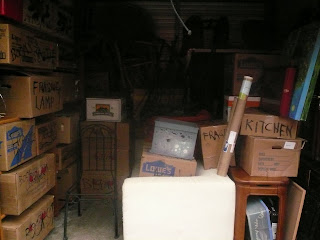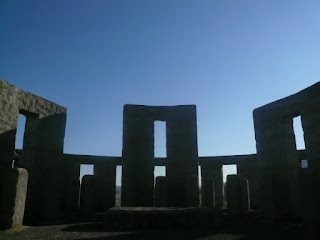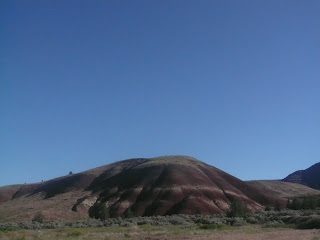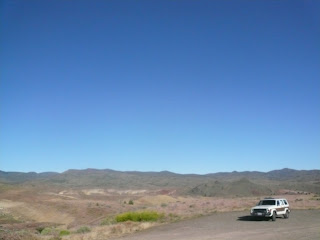
The contents of my apartment, minus one Jeep-ful. Where did this all come from?

Replica of Stonehenge on the banks of the Columbia River, near Maryville. (Vaguely, in the distance, lie the Columbia River flood basalts.)

The Painted Hills section of the John Day Fossil Beds. This lame picture really doesn't do the colors justice. Now one of my favorite places, this was totally worth the long drive. (Old car + lots of stuff + mountain passes = 25mph.)

The Painted Hills are a layers of volcanic tuff that were protected by basalt flows. Eventually, they were tilted and uplifted to expose these red/tan/yellow/green/pink layers. (Seriously. It's awesome.)

Is the Jeep for scale, or just to show it off? You decide.
After visiting the Painted Hills, I was pressed for time, and discovered that said Jeep can go 70mph without disaster, or photographic evidence.
But, suffice it to say: I made it to my internship, and it is beautiful out here - lots of basalt flows and sagebrush. Today was a really laid-back first day, just checking out files on the nearby caves, which look awesome. I'm really looking forward to visiting them this summer.
